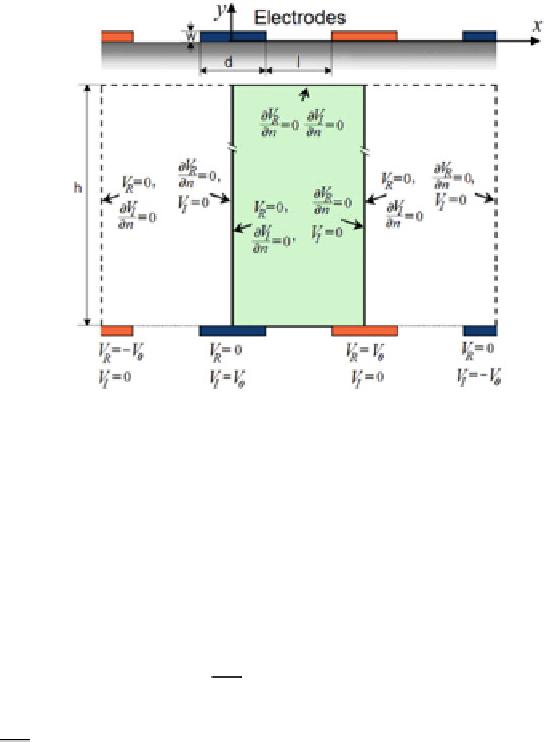Environmental Engineering Reference
In-Depth Information
Fig 14.13 The geometry of
the computational domain
and the associated boundary
conditions for the electric
potentials. The
solid lines
indicate the basic unit cell
The macroscopic behavior of a suspension of spherical particles in a dense and
viscous fluid can be modeled considering the mechanical equilibrium between an
external spatially dependent force F and the Stokes drag. When the size of the
particles, relative to the length
L
of the microchannel and the volume fraction
C
of
particles is small, the dynamics of the two-phase system can be expressed by the
following system of equations [
35
,
48
]:
2
a
2
9
v
p
¼
v
m
þ
F
;
ð
14
:
26
Þ
ʷ
∂
C
∂
t
þ
∇
j
¼
0, where j
¼
C
v
p
D
C
:
ð
14
:
27
Þ
∇
Here v
m
and v
p
are the fluid and particle velocities, respectively,
a
the particle
radius,
the viscosity of the fluid,
t
the time, j the particle flux,
D
the diffusion
coefficient of the particles, and F denotes the dielectrophoretic external field.
The fluid flow field for the carrier medium is obtained by calculating the
stationary solution of the Navier-Stokes equation in the compressible case, with
no-slip condition imposed to the walls and on the electrodes
ʷ
surface. A schematic
representation of a typical computational domain corresponding to a microfluidic
DEP separation device with an interdigitated electrode array, revealing its main
geometric parameters, is given in Fig.
14.14a
. The device has a rectangular cross
section (
L
x
¼
'
h
) with parallel bar electrodes placed on the bottom surface.
Very often, due to the symmetry of the device and considering the electrodes much
longer than their width, the flow problem can be treated in two dimensions, and the
Navier-Stokes equation is solved in this cross section of the device. If the height of
electrodes can be neglected, a simplified computational domain can be considered,
L
,
L
y
¼

